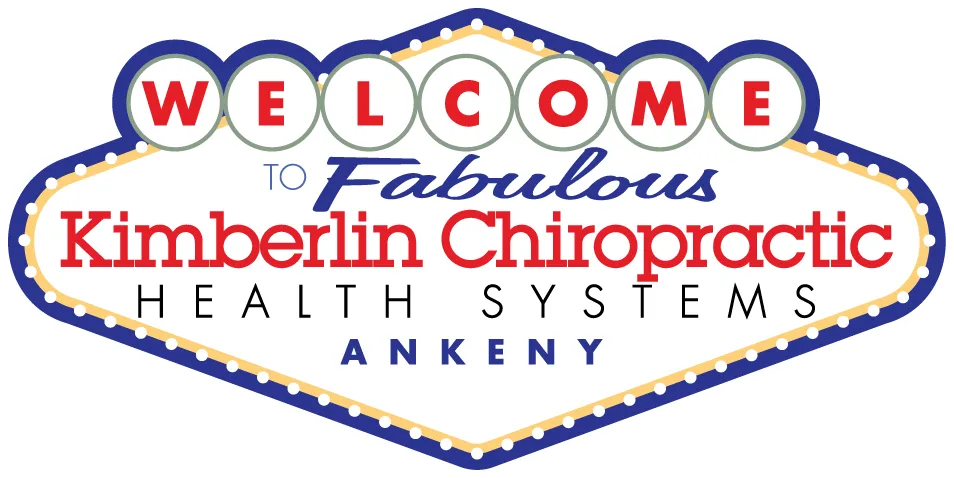Non-Invasive Laser Treatment for Sciatica
Sciatica Treatment with Non-invasive laser therapy
Authored by Dr. Dale Kimberlin, Kimberlin Chiropractic Health Systems
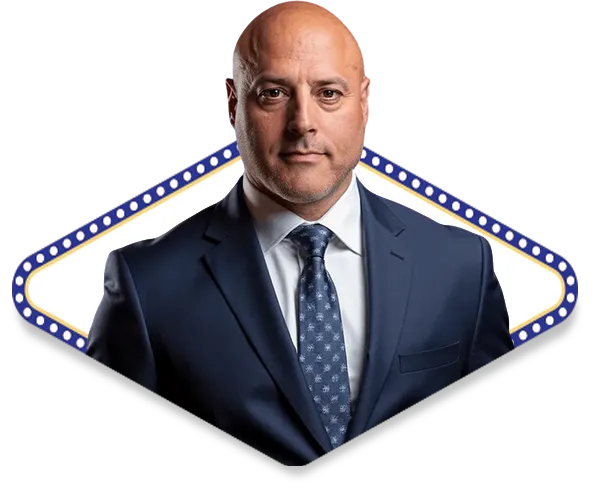
meet dr. dale kimberlin
"I've been adjusting patients for 25+ years now. If you're looking for a doctor who knows what he's talking about, you've come to the right place."
If you're suffering from sciatic nerve pain, you're not alone. Millions of Americans experience the sharp, radiating discomfort that characterizes sciatica each year. The good news? You don't have to resort to surgery or rely on pain medications indefinitely. Non-invasive treatment for sciatica has revolutionized how we approach this debilitating condition, offering patients beyond safer, effective alternatives to surgical intervention. Among these innovative approaches, sciatica non-invasive treatment options, particularly laser therapy, have emerged as game-changers in pain management and healing.
This article explores how laser-based treatments work, their benefits, and why they're becoming the preferred first-line approach for countless patients seeking relief from sciatic nerve pain without going under the knife.
What is non-invasive laser treatment?
When a patient with sciatica is treated non-invasively, they are treated in an office or clinic without any surgery or penetration of the skin beyond superficial means. Non-invasive treatments aim to address the root causes of the irritation of the sciatic nerve - this includes inflammation, muscle spasm, or injury to surrounding tissue - while avoiding any of the risks that can be associated with invasive treatment options.
The benefit of non-invasive treatment options, in comparison to invasive procedures, is that the patients can often continue to engage in their normal daily activities either during or post-treatment. There is no hospital stay, surgery recovery time, or risk of surgical complications associated with non-invasive options. Non-invasive treatment options can be considered in different forms of therapy. These include chiropractic adjustments, physical therapy, acupuncture, and laser therapy options that continue to grow.
There are multiple reasons why patients wish to try non-invasive options: to avoid surgical complications, to avoid general anesthesia, to have no recovery time, to keep the natural structure of tissue, and to incorporate other conservative options in a multidisciplinary approach. Most importantly, these options are trying to manage the pain from the root source of the pain, and not replacing medication. For most people with sciatica, it makes both medical and procedural sense to explore diagnosing, treatment, or managing preventative options first prior to the other less invasive options for diagnosis and treatment plan.
Laser Therapy: The best therapy for sciatic nerves?
Laser treatment for sciatica pain is one of the most technologically advanced non-invasive treatment modalities for sciatica presently available. How can shining light on painful areas promote pain resolution? The science is both compelling and well-established.
Laser treatment for sciatica pain involves a process referred to as photobiomodulation. When specific wavelengths of light penetrate the skin and interact with the affected tissues, they stimulate cellular activity at the level of the mitochondria. The stimulation of the cell leads to multiple therapeutic effects: increased ATP (cellular energy) production, increased blood supply to the area, reduced inflammation, reduced swelling, quickened tissue repair and regeneration, decreased nerve sensitivity, and decreased pain signals. According to Dr. Dale Kimberlin, this scientifically supported mechanism is what makes laser therapy a powerful non-invasive option for managing sciatic nerve pain.
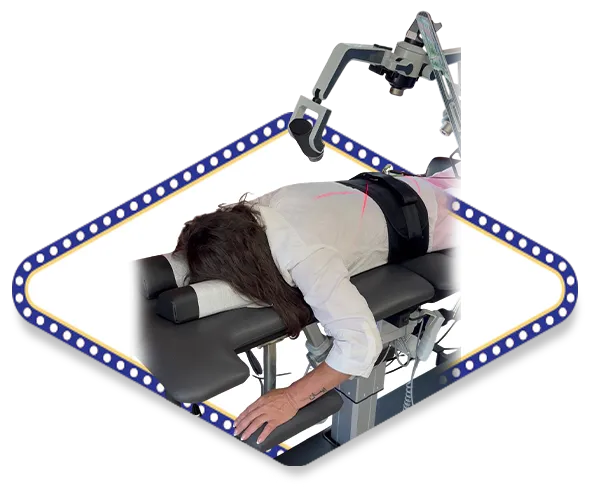
Types of laser treatments
Low-Level Laser Therapy (LLLT)
Low-Level Laser Therapy (LLLT), also referred to as cold laser therapy, relies on lower-intensity laser light that does not produce heat. LLLT excels with surface tissues and reduces inflammation. This methodology of cold laser for sciatica is gentle and completely painless.
Deep Tissue Laser Therapy
Deep Tissue Laser Therapy requires higher-intensity lasers that are able to penetrate deeper into muscles, tendons, and nerves. This makes deep tissue laser therapy an effective procedure for sciatica laser treatment because the sciatic nerve may be compressed or irritated, deep in the tissue.
High-Intensity Laser Therapy (HILT)
High-Intensity Laser Therapy (HILT) provides powerful therapeutic effects to deeper structures, creating faster healing for more chronic conditions. HILT or high-intensity laser therapy has the ability to reach the root causes of nerve compression more effectively compared to traditional treatment protocols.
Class IV Laser Therapy
Class IV laser therapy is the most advanced level of laser therapy. This procedure essentially combines the best of both worlds of deeper treatments while having shorter treatment times. Many chiropractic offices offer class IV therapy for sciatica as a means of therapeutic treatment.
What is the least invasive laser treatment?
The least invasive laser treatment for sciatica is Low-Level Laser Therapy (LLLT), also known as cold laser therapy. This treatment uses low-intensity light that penetrates the skin without generating heat, making it gentle and painless. LLLT effectively reduces inflammation and promotes tissue healing by stimulating cellular activity and improving circulation around the sciatic nerve.
Typically, sessions last 10-30 minutes, involve no downtime, and can provide noticeable pain relief after just a few treatments. Because it is non-invasive and drug-free, LLLT is a popular first-line option for patients seeking safe, effective relief from sciatic nerve pain without surgery or medication.
What are the Benefits of Laser Treatment?
Many patients commonly inquire whether laser therapy can effectively treat sciatica, and many clinical studies, as well as experience from numerous patients, show that it can, indeed, effectively treat this condition. According to Dr. Dale Kimberlin, consistent use of advanced laser therapy has helped many of his patients experience noticeable pain relief and faster recovery without the need for surgery. Let's now detail the specific effects that make laser light therapy for sciatica a realistic treatment option.
Pain Relief and Inflammation Reduction:
Pain Relief and Reduction in Inflammation: The powerful anti-inflammatory benefit is among the most significant advantages of using cold laser treatment for sciatica. Sciatic pain is typically related to inflammation around the sciatic nerve, be that from a herniated disc, spinal stenosis, or muscle spasm. Laser therapy helps decrease inflammatory markers and swelling, which improves the situation by reducing discomfort by alleviating the pressure on the nerve. Many patients report a substantial decrease in their pain after just a few sessions; some (staff) patients even indicate an immediate effect during the first treatment.
Accelerated Tissue Healing:
Accelerated Tissue Healing: Deep tissue laser therapy for sciatica promotes faster healing by stimulating the regeneration of the cells. The photons from the laser increased blood flow to the treatment area, which increases the delivery of oxygen and nutrients to damaged tissues while removing any waste products from their metabolism. This improved circulation establishes an optimal local environment to allow the body to heal itself, regenerating any tissues rather than waiting for the body to do so at its natural rate.
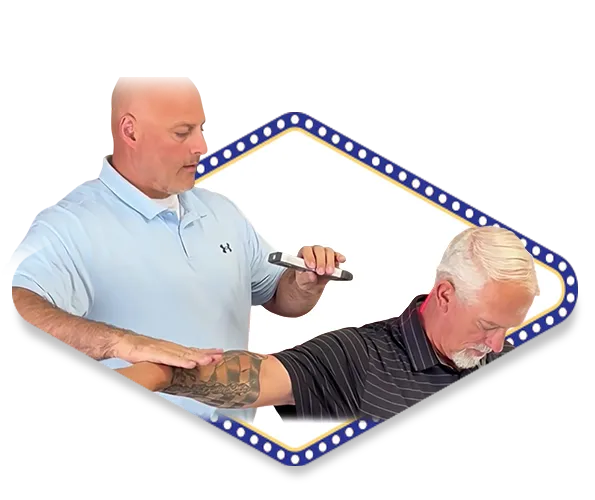
Surgery and Medication Avoidance:
One of the most important benefits of laser therapy for sciatica is to allow patients to avoid and bypass surgery. There are risks and dangers that are a part of surgery, which can include infection, anesthesia complications, unsuccessful back surgery syndrome, a lengthy recuperation process, and a significant financial burden. Long-term usage of pain medications is not without its own serious problems as well, especially opioids, which can lead to dependency and side effects. Is laser treatment good for sciatica as an option? Absolutely. It is a happy medium that’s effective and safe.
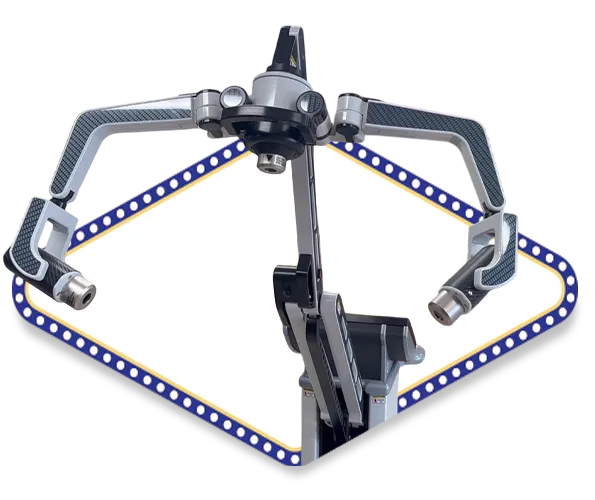
How Laser Therapy Compares to Surgical Options: Is laser treatment better than surgery?
When you look into treatments for sciatica, you will see terms such as "laser spine surgery for sciatica" or "laser surgery for sciatica." You need to understand the significant differences between a non-invasive laser treatment for sciatica and a surgical sciatica procedure, known as laser surgery for sciatica.
| Aspect | Invasive Laser Therapy (Laser Spine Surgery) | Non-Invasive Cold Laser Therapy |
|---|---|---|
| Procedure | Performed surgically with tissue incision | Applied externally without surgery |
| Pain Relief | Immediate but involves surgical risks | Gradual, promotes natural healing |
| Recovery Time | Longer recovery due to surgery | Minimal to no downtime |
| Risk Level | Higher risk of complications and infection | Very low risk, non-invasive |
| Cost | Generally higher due to surgical and hospital fees | Lower cost compared to surgery |
| Side Effects | Possible scarring, nerve damage | Minimal side effects, mostly mild skin irritation |
| Suitability | Reserved for severe or refractory cases | Suitable for mild to moderate sciatica pain |
| Treatment Sessions | Usually a one-time procedure | Multiple sessions are typically required |
| Patient Comfort | Requires anaesthesia and hospitalization | Painless, no anaesthesia needed |
| Effectiveness | Can directly remove or repair nerve compression | Helps reduce inflammation and promotes healing |
For most patients, trying non-invasive laser therapy for sciatica first makes excellent medical sense. Surgery can always remain an option if conservative treatments don't provide adequate relief, but once you undergo surgery, you cannot reverse that decision.
What should you expect during Laser Therapy Sessions?
Initial Evaluation: You'll undergo a thorough evaluation with Dr. Dale Kimberlin, including medical history, symptom presentation, physical exam, and a review of any imaging to determine whether cold laser therapy is appropriate for your sciatica.
Treatment Process: You will lie comfortably as Dr. Dale Kimberlin applies the laser device to the painful area; the appointment typically lasts between 5 and 15 minutes, depending on the condition being treated.
Sensation During Treatment: Most patients feel little to no sensation at all; some experience a warm or tingly sensation. The treatment is painless and relaxing.
Session Frequency: A typical treatment course consists of approximately 6-12 visits, over a 2-6 week timeframe, typically two to three times a week, depending on progress. Always consult Dr. Dale with your specific healthcare guidance.
Side Effects: There is a slight possibility of mild soreness, mild redness, and mild fatigue following laser treatments; this is rare, transient, and generally resolves quickly. The main effect is pain relief.
Expected Results: Most patients, after several sessions, may experience some improvement, including relief from pain, improved mobility, improved sleep, and a decreased reliance on medications.
Services Offered for Non-Surgical Sciatica Treatment
The successful treatment of sciatica without surgery can take place when it involves a comprehensive approach. A comprehensive treatment plan for sciatica often combines laser therapy with other supportive therapies such as chiropractic adjustments, physical rehabilitation, massage, ergonomic counselling, and nutritional guidance to help patients achieve the best possible relief and recovery.
An example of a full-scale, non-invasive treatment for sciatica may consist of:
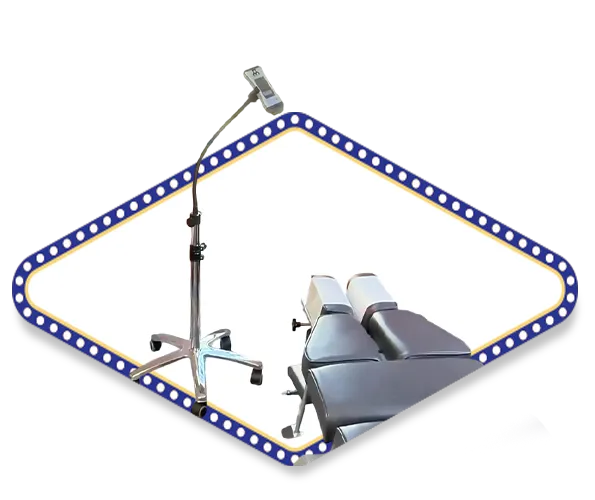
Chiropractic Adjustments: Adjustments to the spine restore proper alignment, relieve pressure on the nerves, and optimize the spine’s overall function. Adjustments to the spine may also enhance the effects of laser for sciatica treatment.
Physical Rehabilitation: Targeted exercise to build strength in supporting muscles, increase flexibility for motion, and reduce your risk of recurring sciatica episodes. Exercise is often provided in a therapeutic exercise plan along with cold laser therapy for sciatica treatment.
MVX+ Lab Testing: Understanding your bloodwork helps Dr. Dale Kimberlin identify your specific health vulnerabilities so he can best guide your steps to optimal wellness.
Lifestyle and Ergonomic Counselling: Educating patients about their posture, body mechanics, workplace ergonomics, and home exercise can give patients an empowering level of treatment and recovery participation.
Nutritional medicine: Dietary recommendations directed toward reducing inflammation can facilitate the rate of recovery and decrease systemic inflammation.
What to do if you have sciatica pain?
If you're searching for effective sciatica relief in Ankeny, chiropractic care is a viable and promising option. With its non-invasive approach and focus on treating the root cause of pain, chiropractic care can help you reclaim your life and move freely once again. Whether you're dealing with mild discomfort or severe pain, consulting a qualified chiropractor can be your first step toward recovery.
Embrace a pain-free future and find a trusted sciatica chiropractor near you today. Your journey to wellness begins with the right care and support, empowering you to live each day to the fullest without the constant burden of sciatic pain. By taking proactive steps towards your health, you can enjoy improved well-being and a higher quality of life.
Medical Disclaimer: This article is for informational purposes only and should not replace professional medical advice, diagnosis, or treatment. Always consult with a qualified healthcare provider before beginning any new treatment program. Individual results may vary, and not all patients may be suitable candidates for laser therapy. Your chiropractor will evaluate your specific condition to determine the most appropriate treatment approach for your needs.
Frequently Asked Questions
What is the least invasive laser treatment?
Low-Level Laser Therapy (LLLT), or "cold laser," is the least invasive option because it uses low-intensity light applied externally, produces no heat, requires no incision or anesthesia, and has virtually no downtime.
What are the disadvantages of laser therapy?
Disadvantages include variable evidence quality across conditions, need for multiple sessions, out-of-pocket cost for many patients, a small chance of temporary soreness or redness, and that it may not work for severe structural compression requiring surgery.
How effective is laser therapy for sciatica?
Evidence shows modest-to-moderate short-term pain and function improvements for some patients with radicular low back pain, with some meta-analyses reporting significant reductions in pain versus sham, though high-quality long-term evidence remains limited.
Can sciatica be operated on by laser?
Yes , there are surgical procedures using laser energy (e.g., percutaneous laser disc decompression, laser spine surgery) that are invasive and performed in an operating setting to remove or reduce disc material, but these are different from non-invasive therapeutic lasers.
Is there a non-invasive surgery for sciatica?
The term "non-invasive surgery" is contradictory; truly non-invasive options (like LLLT/HILT) are conservative therapies, while minimally invasive surgical procedures (microdiscectomy, endoscopic discectomy, percutaneous laser decompression) require small incisions and are considered minimally invasive rather than non-invasive.
How much does laser treatment for sciatica cost?
Clinic pricing varies, but typical per-session fees range roughly from $50–$250; a full course (6–12 sessions) commonly totals about $300–$2,200, while specialized deep-tissue or hospital programs can run higher (up to $1,000–$3,000 for intensive programs). Insurance coverage is inconsistent.
Is there a permanent fix to sciatic nerve pain?
No single guaranteed permanent fix exists; many cases resolve with conservative care over weeks, some chronic cases improve with ongoing management, and surgical interventions can provide long-term relief for appropriately selected structural causes, but recurrence is possible.
What is the newest treatment for sciatica?
Newer approaches include high-intensity laser therapy (HILT) protocols, endoscopic/minimally invasive surgical techniques, biologic treatments (e.g., platelet-rich plasma in research use), and personalized multimodal rehab programs , evidence for many novel treatments is still emerging.
What vitamin deficiency causes sciatica?
No specific vitamin deficiency directly causes true sciatica from nerve root compression; however, deficiencies in B vitamins (especially B12) can cause neuropathy-like symptoms that may mimic or worsen nerve pain, so B12 deficiency should be considered in neuropathic presentations.
What is the success rate of laser spine surgery?
Reported success rates vary widely by procedure and indication; some sources and surgical centers report high success rates for selected patients (often 70–95% for relief of radicular leg pain after targeted minimally invasive procedures), but published outcomes vary and depend on patient selection and technique.
All In On Wellness - Ankeny's Top Chiropractic Care
cold laser therapy in ankeny
$50 new patient special
Stop gambling with your health. Kimberlin Chiropractic is your sure bet to a better tomorrow.

Lorem Ipsum is simply dummy text of the printing and typesetting industry. Lorem Ipsum has been the industry's standard.

Lorem Ipsum is simply dummy text of the printing and typesetting industry. Lorem Ipsum has been the industry's standard.

Lorem Ipsum is simply dummy text of the printing and typesetting industry. Lorem Ipsum has been the industry's standard.
Jennifer Ebron
Neck Pain Treatment
Christopher Strock
Back Pain Treatment
Christopher Strock
Back Pain Treatment

